Nothing says tropical quite like the beauty of the hibiscus flower. While it may look good on a Hawaiian shirt, it will look even better in your garden. There are so many types of hibiscus out there, from tropical houseplants to herbalist favourites. This post will help you understand the plants we commonly call ‘hibiscus’ so you know which ones you can grow in your garden.
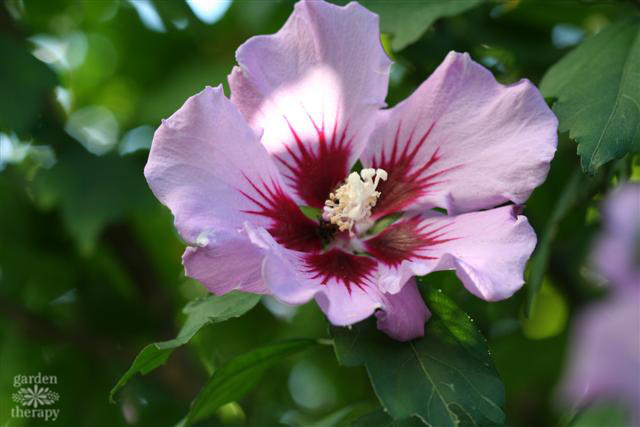
There are hundreds of species of hibiscus, most with large and colourful blooms. Their trumpet-like flowers come in an array of colours and are highly attractive to butterflies and hummingbirds. While the flowers themselves typically only last for a day, the plant has a long season of blooming to keep the garden looking as lovely as ever.
Belonging to the Malvaceae family, they’re originally native to North Africa and Southeast Asia. In subtropical and tropical regions, hibiscus plants grow as perennials and as annuals in temperature regions. Some even choose to grow the tropical beauties as houseplants.
So whether you want to grow them outside or in, this guide will demystify how to add a healthy and lovely hibiscus plant to your plant collection.
This post will cover…
- Types of Hibiscus Flowers
- Plant a Hibiscus Flower
- How to Care for Hibiscus
- Light
- How to Water Hibiscus
- Fertilizer Needs
- How to Prune Hibiscus
- Pests and Diseases
- Frequently Asked Questions About Hibiscus Flowers
- More Flower Posts
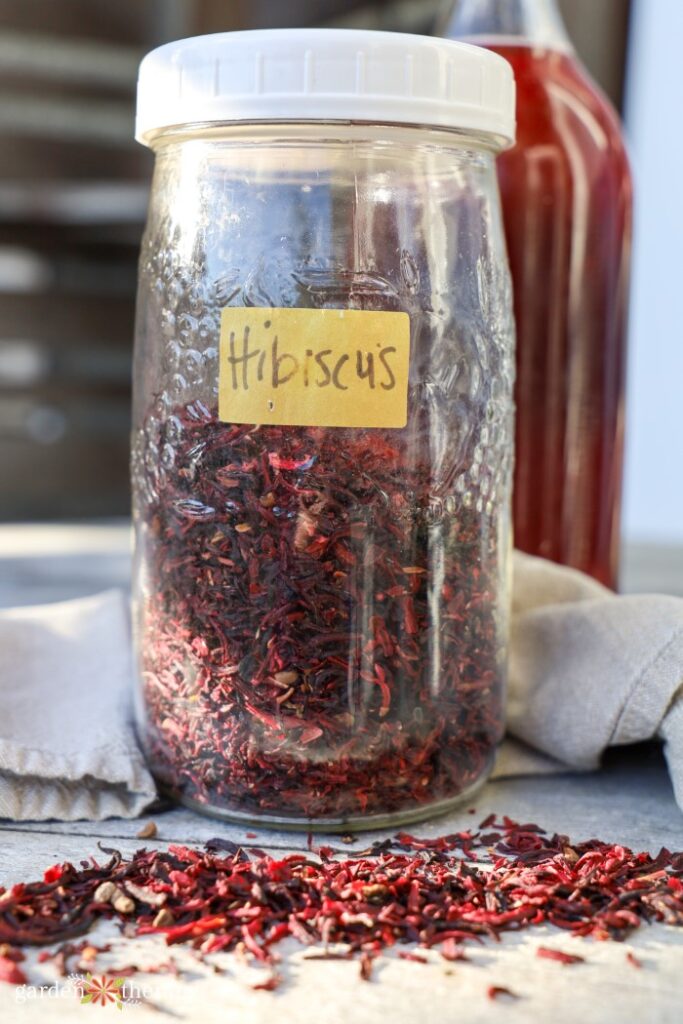
Types of Hibiscus Flowers
There are many varieties of hibiscus and even more cultivars but here are some of the main types you are likely to encounter and that I’ll refer to in this guide.
- Rose of Sharon (Hibiscus syriacus): Also known as the Korean rose, this is a very popular hardy hibiscus for cool climate growing (USDA Zones 5-9 generally). It’s a deciduous perennial that flowers relatively late in the season. You can find pink, white, or purple blooms from late summer to mid-fall.
- Roselle (Hibiscus sabdariffa): this hibiscus is the culinary and herbal hibiscus made into a delicious tea. It has a host of many benefits. It has smaller, less showy blooms than the other with large yellow flowers with red-purple centers.
- Chinese Hibiscus (Hibiscus rosa-sinensis): also known as the Hawaiian hibiscus (this is the one you see on Hawaiian shirts, towels, flip flops…). It has large, showy blooms in a bright red that blossom from May through to October. A tropical hibiscus, but in cool climates, we can grow it as a houseplant.
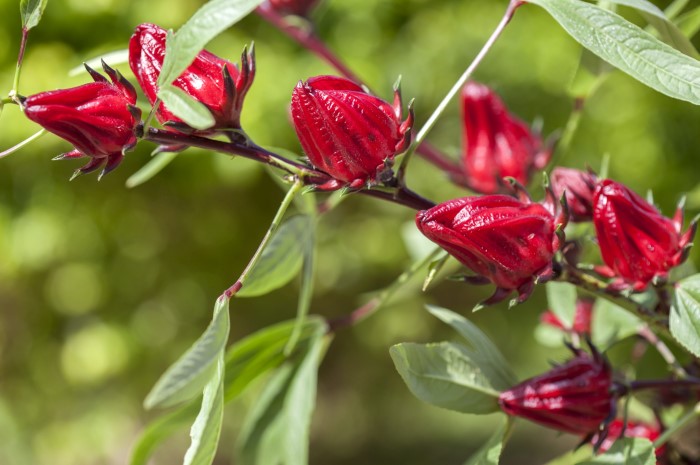
Plant a Hibiscus Flower
If you want to grow a hibiscus flower outside in a non-tropical climate, you’ll need to plant the hardy Hibiscus syriacus. When planting, remember that the plant likes full sun. Except if you live in dry heat, then filtered sunlight is best for these plants.
They thrive in slightly acidic soil that has good drainage. Hibiscus should be kept fairly moist so you may want to add some mulch to retain moisture. Especially if you live in dry conditions.
Hibiscus grows well in containers outside as well, as long as you remember to give them frequent waterings! The plants should also have some shelter from strong winds.
How to Care for Hibiscus
For your outdoor hardy hibiscus, they’re very easy to grow. Their beauty combined with low maintenance needs makes them a popular garden shrub. The indoor varieties, such as the Hibiscus rosa-sinensis, can be tricky to get to reflower. But with the right care, they should bloom year after year!
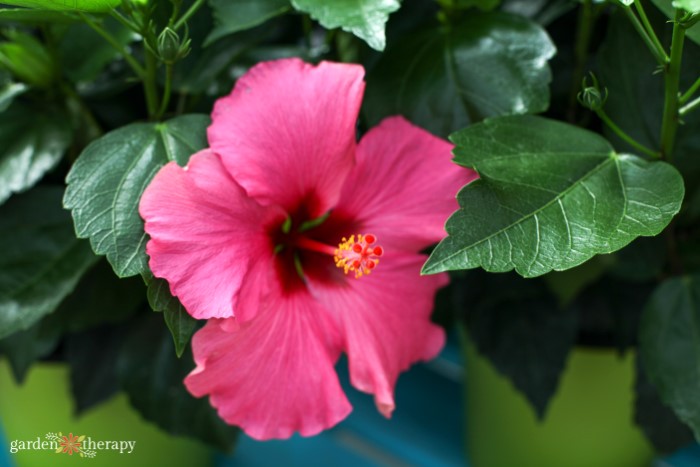
Light
Hibiscus love bright conditions so place them in the sunniest spot in your home. Inside, they should be protected from direct light in the summer. If they’re not flowering enough or at all, it’s likely not getting enough light.
In the summer, you can move your indoor hibiscus outside. Just remember that they can only tolerate a minimum temperature of 7-10 degrees Celsius. Gradually acclimate them outside to the brighter conditions.
How to Water Hibiscus
During the growth season, spring and summer, make sure to water the hibiscus often. When fall and winter come along and your plant goes into dormancy, slow down the waterings and make sure it dries out between waterings.
Overall, hibiscus plants are very thirsty. The hardy varieties are native to wetlands so they don’t mind wet soil outside. But to keep all hibiscus happy during the hot summer, you may need daily watering to get blooms depending on the conditions.
Indoor hibiscus can suffer from bud drop if they don’t get enough humidity or water. Mist them regularly or keep them in an area of the house with high humidity.
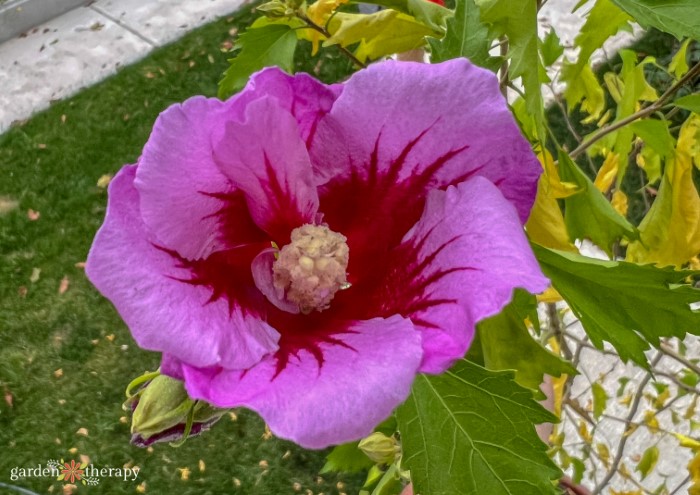
Fertilizer Needs
Hibiscus flowers can benefit from an annual feeding of slow-release fertilizer in the spring. You can use a rose food or a fertilizer high in potassium and nitrogen.
You also want to give them a liquid fertilizer once every two weeks during the growing season, especially right before and during flowering.
How to Prune Hibiscus
For the most part, the hibiscus doesn’t require much pruning. You can prune when they have gone into dormancy or in early spring around February and March. Be sure to get rid of dead and diseased stems.
You can also shape the plant if you think it needs it. To keep it compact and bushy, you will want to shorten the previous year’s growth which will then produce new flowering stems. The non-flowering, thin shoots can also be removed. You will want to wait three years for your hibiscus to get established before you prune it for its shape. If needed, it can handle aggressive pruning.
It should be noted that rose of Sharon is an invasive species in most of eastern North America.
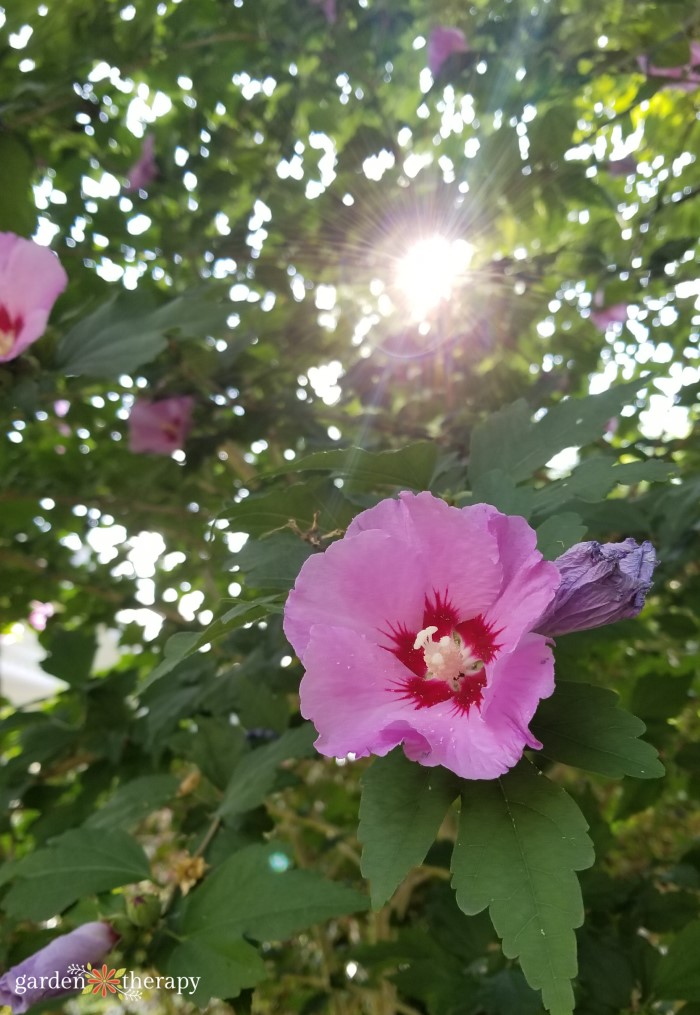
Pests and Diseases
The hibiscus plant is not very prone to many pests or diseases. You may encounter red spider mites if there’s not enough humidity. The insects thrive in dry environments so increase the humidity to control them. Aphids can also infest the plant, so try to attract ladybugs to your garden to prevent a flare-up of aphids.
Frequently Asked Questions About Hibiscus Flowers
Hibiscus are fairly sensitive to sudden changes in weather. Make sure to slowly acclimatize it before planting and if you bring it outside for the summer. The leaves will yellow normally during the usual changing of the seasons.
Any other time is a reason for concern. Besides a sudden shift in temperature, it can also indicate improper watering or not enough fertilizer.
It all depends on where you are and what kind of hibiscus you would like to grow. The most common perennial hibiscus is the Hibiscus syriacus. Also known as the rose of Sharon, it’s a hardy deciduous plant that will lose its leaves in the fall and grow again in the spring. They grow best in zones 5-9. You can also grow tropical hibiscus in zones 9-11.
Just about every hibiscus is pet-friendly. The only exception is the Hibiscus syriacus, rose of Sharon. It can cause a lack of appetite, nausea, and vomiting in pets.

Let me know what kind of hibiscus flower you plan on growing! No matter which one you choose, it’s sure to be a stunner.






A friend gave me a plant two years ago. It looks like a hibiscus flower, bright red, but it comes up from the ground very late in the spring and gets very tall, well over my head. I live in Michigan and it dies back, it isn’t like a rose of Sharon. Any idea to the type I have and if it would be medicinal?
So sorry for your flare up. Hoping you will recover more quickly this time.
Is it a pink lady?